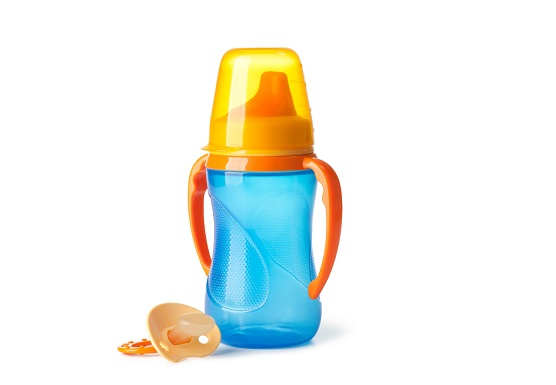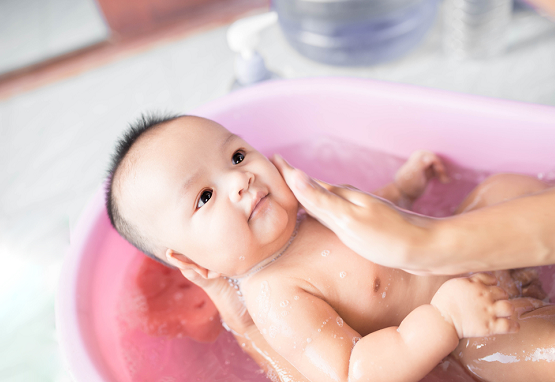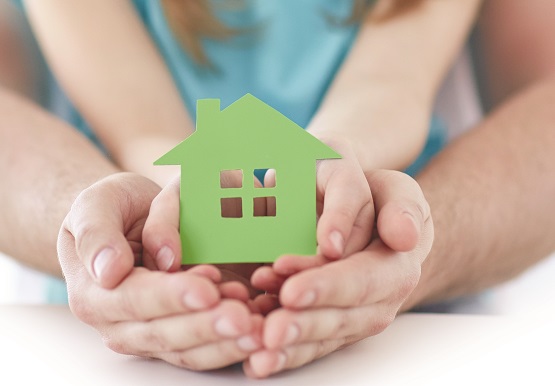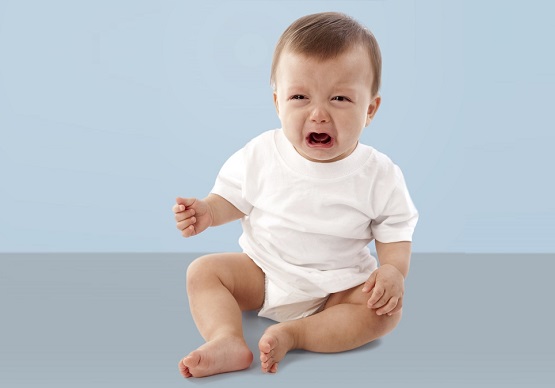Bathing Babies
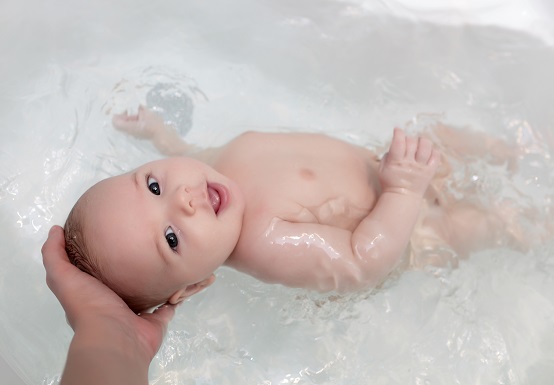
It can be nerve-wracking for new parents to bathe a precious newborn. Learn some bathtime basics to build your confidence and safeguard your baby.
HOW OFTEN AND HOW LONG?
A bath two to three times a week is enough to keep a newborn baby clean, as long as adequate cleansing is done during diaper changes and after feedings. However, if your baby really enjoys a bath, you can bathe him or her once a day. Bathing more often than this may dry out your baby’s skin.
A newborn baby’s bath should be kept from five to ten minutes. This is especially important if your baby has dry or sensitive skin.
From about four months of age, once your baby starts crawling and eating solid foods, you will need to bathe him or her once or twice daily. Do not be tempted to exceed two baths a day, as excessive bathing can cause skin dryness and decrease the natural bacteria count of your baby’s skin. This, in turn, may increase his or her risk of developing eczema later in childhood.
TUB TIME WITH BUB
Many parenting authorities encourage co-bathing with babies as an extra opportunity for beneficial skin-on-skin contact. Studies have shown that skin-on-skin contact improves breastfeeding success, helps decrease infant crying and even helps to maintain infant blood sugar levels and temperature.
As your baby gets older, bathtime can become a multi-sensory learning experience. You can introduce squeaky bath toys and explore tactile sensations with bubbles and pouring water. It’s the perfect setting for a basic anatomy lesson – ask your little one to show you his or her toes, nose and ears… And let the fun times flow!
Instead of a bath, you can treat your baby to a shower. Make sure the surface of the shower cubicle is not slippery, and hold your little one safely in your arms. It’s another great way of bonding through skin-on-skin contact.
TOP AND TAIL’ BETWEEN BATHS
Between baths, you can help keep your baby fresh and clean by wiping his or her diaper area, hands and face up to several times a day (top and tail). This cleans your baby’s skin without the need for rinsing, moisturising and soothing, while preserving the skin’s natural balance and applying a protective film.
HOW TO BATHE YOUR BABY
- Start with only a few inches of warm water. Baby’s bath water should be between 32 and 38 degrees Celsius. After filling the basin or tub, be sure to swirl the water with your hands so there are no hot spots.
- Before putting your baby in the bath water, test the water’s temperature on the inside of your wrist to make sure it is not too hot.
- Using one arm to gently support your baby’s back, head and neck, gently place him or her in the baby bath. Continue to support him or her using one arm while bathing him or her with the other.
- Eyes: To clean your baby’s eyes, you should use a clean cotton pad for each, starting from the inside corner of the eye, moving outwards.
Face: Use a soft washcloth to wipe around your baby’s mouth, nose and face, starting from the middle, moving outwards. Remember to wipe the creases in their neck and behind the ears. - For younger babies, wet a baby washcloth with warm water and use a gentle cleanser formulated for babies. Don’t be afraid to gently wash the soft spots (called fontanels) on your baby’s head.
- Wash the diaper area last. Gently cleanse the genital area by washing from front to back and dry thoroughly. For an uncircumcised boy, avoid pulling back the foreskin.
- Let your baby take a few moments in the bath to enjoy the warm water. Pour cupfuls of water over your baby’s body to keep him or her warm. Be careful when running water directly from the tap as the water temperature can change suddenly.
- Wrap both hands around your baby’s chest, under their arms, and support their head. Lift him or her out of the bath and quickly wrap them in a towel.
- Dry your baby thoroughly in all the creases, as excessive moisture could lead to skin irritation.
GENERAL GUIDELINES
Clean only what you can see. In other words, avoid putting anything deep into your baby’s ear canal or nose.
If your baby’s skin is dry, add a few drops of specially formulated baby oil to the bath water.
Remember, every baby is different. Some babies don’t like to be bathed too soon after feeding. Many mums find it best to bathe their baby before they eat.
Above all, never leave your baby alone in the bath.
Be prepared. Make sure you have everything you need before giving your baby a bath. Cleanser – check. Shampoo – check. Cotton pads – check. Washcloth – check. Toy – check. Towel – check.
Finally, enjoy bathtime with your baby!
This article is taken from our My Alvernia Magazine Issue #35. Click here to read the issue on our website or on Magzter
